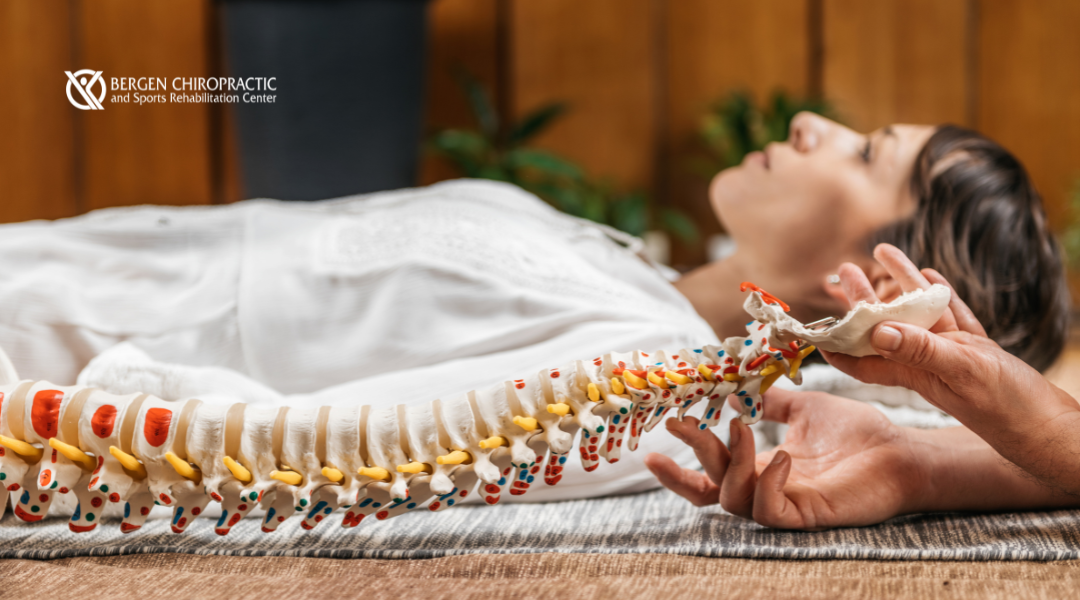A cervical spine injury, or subluxation, can occur from anything from a car accident to sitting in front of the computer for hours at an odd angle. When found early, it can be easily treated by your chiropractor. Left too long, however, a cervical spine injury may have severe consequences in the form of chronic, serious, and permanent disability.
Let’s talk about subluxation of the cervical spine and the chiropractic treatment that can put things back into alignment.
What is the Subluxation of the Cervical Spine?
The cervical spine consists of the seven vertebrae of your neck, known as C1 to C7, from the bottom of the skull to the top of the shoulders. It encases the top of the spinal cord, supports head movement and the vital structures in the neck, and keeps your head off your shoulders.
A subluxation of the cervical spine means vertebrae are out of alignment and not working properly. A cervical spine injury hinders movement and causes neck pain and other unpleasant symptoms.
What are the Symptoms of Cervical Spine Subluxations?
Subluxation of the cervical spine produces several common symptoms, including:
- Neck and back pain and stiffness
- Spinal muscle spasms
- Reduced range of motion
- Arm or leg pain, numbness, or tingling
- Chronic headaches
- Dizziness
- Imbalance
Pain can be mildly uncomfortable to severe and debilitating. Chronic neck or back pain is also an indication, as are tension headaches, migraines, and a grinding sensation in the neck.
In some cases of cervical spine injury, symptoms may travel to other body parts. Joints may become painful, your body may take longer to heal, and you may feel generally unwell. Pain in the arms and shoulders may result from irritated or damaged nerves. Even seemingly unrelated issues can be traced back to subluxation of the cervical spine: problems with vision, bowel, bladder, swallowing, face and jaw, arms, and legs.
What are the Causes of Cervical Spine Subluxations?
There are many possible causes of cervical spine injury. However, they tend to fall into the following three categories:
#1: Trauma
A car accident is one of the most common and traumatic causes of cervical spine injury. The violent force of the collision throws the spine out of alignment, causing tears and damage to surrounding tissues. Other traumas can occur from contact sports, fistfights, physical abuse, and falls.
You may be surprised to learn that even small actions repeated over a long time can lead to subluxation of the cervical spine. For example, walking in high heels, carrying heavy bags on one shoulder, or sleeping on your stomach can push things out of balance.
#2: Toxic Chemicals
Many environmental chemicals clash with our bodies and throw things off balance. For example, frequently breathing polluted air, eating processed foods, and using household cleaning products can create an imbalance that can affect muscles and lead to subluxation.
#3: Stress
Constant stress creates tension in the body, tightening muscles. A subluxation can occur if those muscles are in the neck and upper back.
What are the Dangers Associated with Cervical Spine Injury?
The Stages of Cervical Spine Subluxations
An untreated subluxation of the cervical spine can have serious consequences. It will gradually worsen, and the health and strength of the affected area will deteriorate through the following five stages:
- Spinal Kinesiopathology: In this stage, the vertebrae are not in the proper position, and the range of motion—turning and bending—is limited.
- Neuropathophysiology: Nerves are irritated or damaged by the misaligned vertebrae. Neurological problems may spread to other areas of the body.
- Myopathology: Neck muscles may weaken, tighten, or spasm, causing further damage and requiring more intense treatment to correct.
- Histopathology: At this stage, swelling and inflammation are likely, as temperature elevates due to damaged nerves and muscles. Permanent damage may result from herniated or bulging discs.
- Pathophysiology: Without treatment to correct alignment, the body will attempt to heal itself. Abnormal bone growth can damage nerves and create other serious malfunctions.
Dangerous Consequences
At its worst, the cervical spine injury may become a permanent condition you can no longer treat. As effects spread throughout the body, overall health deteriorates. You become susceptible to reduced ability to fight disease, substantial fatigue, pain anywhere in the body, and interrupted functioning of organ systems.
How is the Subluxation of the Cervical Spine Treated?
It is imperative that you seek chiropractic treatment as soon as you know or suspect you have suffered a subluxation of the cervical spine. The longer you wait, the worse the condition will get, the more other parts of your body will be affected, and the more complicated and expensive treatment will have to be if treatment remains an option.
Early treatment consists of non-invasive chiropractic adjustments, exercise, and pain medication. Late-stage treatment may require surgery.
Studies support the benefits of chiropractic treatment, which not only corrects the problem but also improves physical and mental well-being. Patients report a better ability to move around, sleep, and even socialize!
The Cox Technic Flexion Distraction and Decompression Method
The Cox® Technic method is a highly effective adjustment technique that encourages the spine to heal naturally without surgery. First, it decompresses the spine with stretching or traction on a specially designed table. Then, the vertebrae are gently coaxed back to their regular positions. Over 50% of chiropractors have used this gentle method to successfully relieve pain, even for patients who have recently had spinal surgery.
At-home Solutions
There are also things you can do on your own to relieve mild symptoms. For example, gentle stretching, several good nights’ sleep, and ice packs may be helpful. You may also want to try moderate exercise, a neck brace, and not sleeping on your stomach.
We’re Looking Forward to Helping You at Our Chiropractic Offices in NJ!
At Bergen Chiropractic and Sports Rehabilitation Center, our chiropractic team, under the leadership of Dr. Gregory Doerr, adheres to the highest and most professional medical standards to provide superior chiropractic help for post-concussion syndrome patients. Our mission is to provide unparalleled patient care in a comfortable, healing atmosphere.
Access our contact form or call us at (201) 945-4075 to learn more about our chiropractic care services! Our offices at 532 Anderson Avenue, Cliffside Park, NJ 07010, and 62 Summit Ave, Hackensack, NJ 07601, are ready to welcome you as we proudly serve the areas of New York, New Jersey, Philadelphia, PA, and Baltimore, MD. Also, access our blog, Facebook, and Instagram pages for more information on concussion treatment!
References
- “Chiropractic Care of Cervical Spine Subluxation.” Aaron Chiropractic Clinic, www.aaronchiro.com/doctor/chiropractor/chiropractic-Fort-Wayne/id-your-pain/cervical-spine-subluxation. Accessed 25 July 2022.
- Paul Slosar, MD. “Cervical Spine Anatomy.” Spine, www.spine-health.com/conditions/spine-anatomy/cervical-spine-anatomy. Accessed 25 July 2022.
- “What Is Subluxation? Spinal Subluxation Is Caused by the 3 T’s.” Chiropractor in Matthews | Matthews Family Chiropractic, matthewsfamilychiropractic.com/what-is-subluxation/. Accessed 25 July 2022.
- “What Is the Cox Flexion Distraction Technique?: Avon, in Chiropractor: Avon Chiropractic Clinic.” Avon, IN Chiropractor | Avon Chiropractic Clinic, www.avonchiropracticclinic.com/blog/what-is-the-cox-flexion-distraction-technique. Accessed 25 July 2022.








